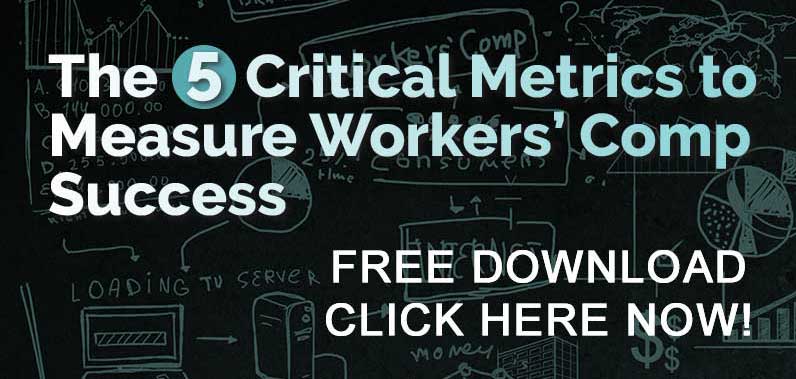What is meant by alternative employment?
Alternative employment means a job other than the injured employee’s job at the date of injury. Alternative employment is used here to describe work that can be performed by an individual who has reached the point of maximal medical improvement (MMI) but is no longer physically able to perform the requirements of the date-of-injury job (the original job). Bringing an employee back to work prior to MMI is discussed in Federal Employees Return-to-Work (Part 1): Transitional Work (before Maximum Medical Improvement).
Read More:
- Industry and Transitional Duty for Federal Government
- Lowering Work Comp Costs for Federal Government (FECA) FAQs
- Federal Employees Return-to-Work (Part 1): Transitional Work (before Maximum Medical Improvement)
What are the alternative employment options with the employing agency?
The employing agency may modify the original job; this should be done formally once an injured worker reaches MMI, rather than extending transitional duty indefinitely. A qualified employee may be offered a different job if there is one open with physical requirements that are consistent with the employee’s capacity. Some employing federal agencies create new jobs that are consistent with business needs and the employee’s physical capacity.
How does vocational rehabilitation work in FECA claims?
If an employing agency indicates it is unable to return an employee with permanent restrictions to work, the OWCP Claims Examiner may refer the employee to vocational rehabilitation. Each OWCP District Office has a Vocational Rehabilitation Specialist, who coordinates referral of employees to local contract vocational rehabilitation counselors. These counselors identify transferable skills, establish vocational goals, and assist the injured worker with resume preparation, interviewing skills, and job searches. Retraining is often offered in the federal system. If an injured worker enters a training program, which in some cases lasts years, wage replacement continues. Refusal to cooperate with vocational rehabilitation efforts may result in reduction or denial of benefits.
What happens if an injured worker is not able to earn as much in an alternative job?
An injured employee with a permanent partial disability who is employed in a job that pays less than the date-of-injury job may be eligible for supplemental wages; this is considered an actual LWEC payment. LWEC stands for Limited Wage Earning Capacity (LWEC). The supplemental wages bring the claimant’s total wages back to what the employee would have been receiving if not injured at work. A claimant who is able to work in some capacity, works with the DOL vocational rehabilitation program, and does not find a job, may be subject to a reduction in wage replacement. Based on a labor market survey, if jobs are locally available that meet the injured employee’s physical abilities, the employees’ compensation payments may be subject to a constructed LWEC; the compensation payments are reduced by the amount of pay the claimant would likely get in an appropriate job.
How can an employer utilize Assisted Re-employment as an option for alternate employment?
The federal Assisted Re-employment program offers federal subsidization of wages to new private sector employer in order to provide an incentive for employing the injured worker, with the goal of transitioning to long term employment. At this point, the program is not available for placement with another federal agency, although the Department of Labor is seeking statutory authority to make this change. Details about this program, which is available across the country, can be found on the Dept. of Labor website.
What is the difference between an impairment and disability?
Under the FECA, impairment is defined as the anatomical or functional loss or reduction of a function of an organ of the body in reference to the activities of normal life; it pertains solely to the claimant’s medical condition. Impairment can be measured, and this measurement, based on the AMA Guides to the Evaluation of Permanent Impairment, 6th edition, is the basis for a schedule award in eligible claimants. Disability is defined in terms of the claimant’s ability to perform the duties of his or her job. (FECA Part 3, 3-0600-2) Disability may be partial (able to perform some work but not all the tasks of the job) or total (unable to do any work at all), and temporary or permanent. A person may have an impairment without any disability, if the impairment does not interfere with the ability to perform the requirements of the job.
What is an actual restriction compared to a preventive restriction?
An actual restriction reflects a functional deficit – an actual inability to perform a given movement or action. A preventive restriction is a recommendation to avoid certain actions in order to prevent further injury, pain or other symptoms. Only actual restrictions are considered in determining eligibility for DOL Vocational Rehabilitation services. A functional capacity evaluation may be helpful in determining the actual functional impairments and physical capacity of an injured employee, although the results are subject to effort.
How can an employing agency evaluate the restrictions?
Employing federal agencies should ask the treating provider for clarification when restrictions are unclear or seem inappropriate or unrelated to the claimed condition. Agencies can also make use of their own or contract clinical resources to review the restrictions and correspond with the treating provider. Agencies should consider suggesting an FCE to the treating provider, and helping the doctor get one authorized. Federal agencies may also order a current employee to have an agency medical exam in some cases.
Acknowledgement
Many thanks to Managed Care Advisors (MCA) for their help preparing the material on this page. MCA is an innovative, woman-owned small business enterprise specializing in managed care, employee health benefits and workers’ compensation consulting and case management services. MCA currently holds two (2) Federal Supply Schedules; MOBIS Contract GS10F0323P and HREEO Contract: GS-02F-0128W.



